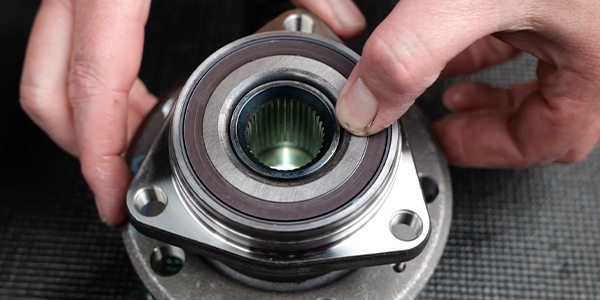If you're experiencing a noisy or rusty wheel bearing, then it's time for you to replace it with a brand new one. Gen 1 bearings are commonly used in most vehicles and they use an interference fit to hold the bearing in the bore. This makes it essential for you to know how to replace and install them properly.

To begin with, let us first understand what a wheel bearing is and why it is crucial to your car's performance. A wheel bearing is a critical component that helps the wheel to rotate smoothly and with minimal friction. It is located in the center of the wheel hub and usually comes in different shapes, sizes, and types.
Gen 1 bearings are usually found in cars with front-wheel drive, such as sedans, SUVs, and even trucks. They are designed to withstand the forces and strains of driving on both paved and unpaved roads. However, over time, rusty wheel bearings can cause serious damage to your car, leading to costly repairs.
Replacing a rusty wheel bearing is not a complicated process, but it requires you to follow some necessary steps to ensure that it is done correctly. This is where the BCA Bearings by NTN brand comes in handy. They offer high-quality replacement bearings that are durable and reliable, making them ideal for your vehicle.
The first step of the process is to ensure that you have the right tools for the job, such as a socket set, torque wrench, and jack stands. Once you have all the tools, you can begin the process of removing the old wheel bearing.
To do this, you'll need to raise the car and remove the wheel, caliper, and rotor. Disconnect the ABS sensor if your vehicle has one. The next step is to remove the hub assembly from the steering knuckle. You may need to use a hammer to loosen the hub from the knuckle.
Once you've removed the hub assembly, the old bearing should slide out quickly. To install the new bearing, follow these steps:
1. Clean the hub assembly with a rag.
2. Press the new bearing into the center of the hub.
3. Reinstall the hub assembly into the steering knuckle.
4. Reinstall the rotor, caliper, and wheel.
5. Lower the car and use a torque wrench to tighten the wheel lug nuts to the recommended torque specifications.
Finally, remember to test drive your car to ensure that the new bearing is functioning correctly.
In conclusion, replacing a rusty wheel bearing is a simple process that requires patience, attention to detail, and the right tools. With the help of BCA Bearings by NTN, you can ensure that your car is running smoothly and safely. If you experience any issues or have any concerns, seek the help of a professional mechanic to ensure that your repair is done correctly.